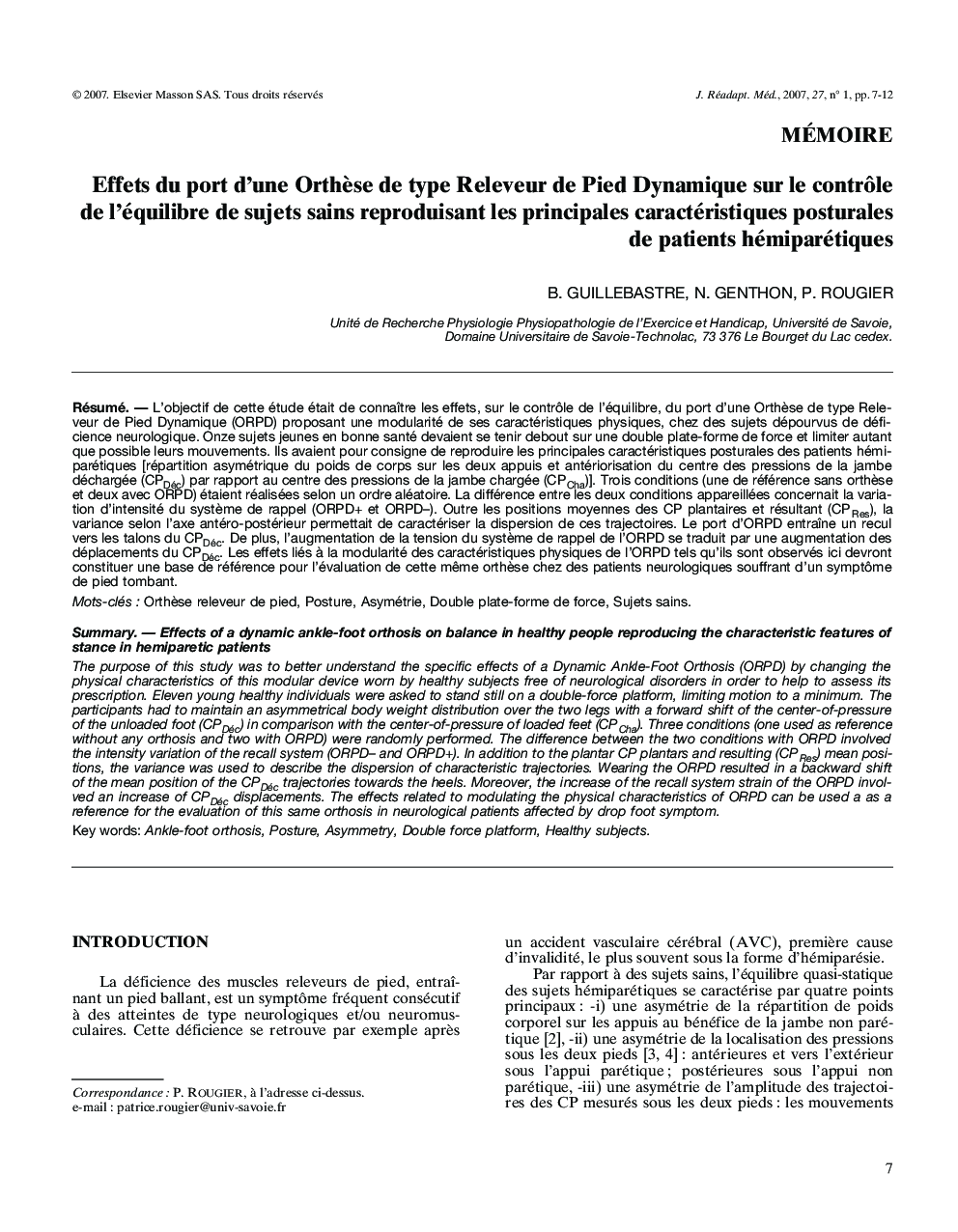| Article ID | Journal | Published Year | Pages | File Type |
|---|---|---|---|---|
| 2701298 | Journal de Réadaptation Médicale : Pratique et Formation en Médecine Physique et de Réadaptation | 2007 | 6 Pages |
Abstract
The purpose of this study was to better understand the specific effects of a Dynamic Ankle-Foot Orthosis (ORPD) by changing the physical characteristics of this modular device worn by healthy subjects free of neurological disorders in order to help to assess its prescription. Eleven young healthy individuals were asked to stand still on a double-force platform, limiting motion to a minimum. The participants had to maintain an asymmetrical body weight distribution over the two legs with a forward shift of the center-of-pressure of the unloaded foot (CPDéc) in comparison with the center-of-pressure of loaded feet (CPCha). Three conditions (one used as reference without any orthosis and two with ORPD) were randomly performed. The difference between the two conditions with ORPD involved the intensity variation of the recall system (ORPD- and ORPD+). In addition to the plantar CP plantars and resulting (CPRes) mean positions, the variance was used to describe the dispersion of characteristic trajectories. Wearing the ORPD resulted in a backward shift of the mean position of the CPDéc trajectories towards the heels. Moreover, the increase of the recall system strain of the ORPD involved an increase of CPDéc displacements. The effects related to modulating the physical characteristics of ORPD can be used a as a reference for the evaluation of this same orthosis in neurological patients affected by drop foot symptom.
Related Topics
Health Sciences
Medicine and Dentistry
Orthopedics, Sports Medicine and Rehabilitation
Authors
B. Guillebastre, N. Genthon, P. Rougier,
